C.F. Martin Guitar Sizes
These are various sizes in which the Style 28 was produced.
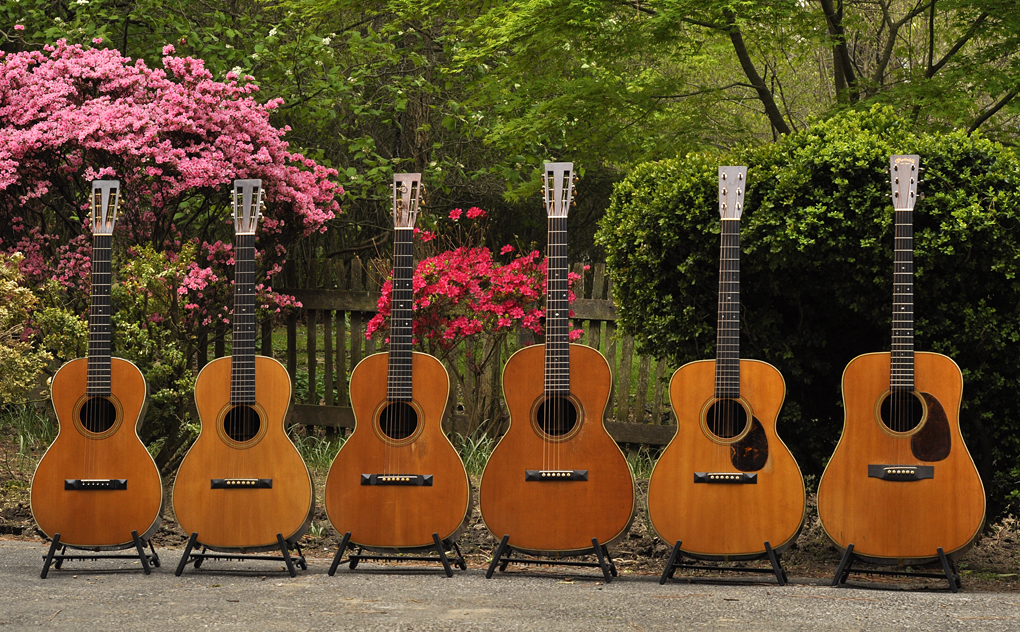
1-28, 0-28, 00-28, 000-28, OM-28, D-28
These are the sizes of guitars common in Martin's first decades.
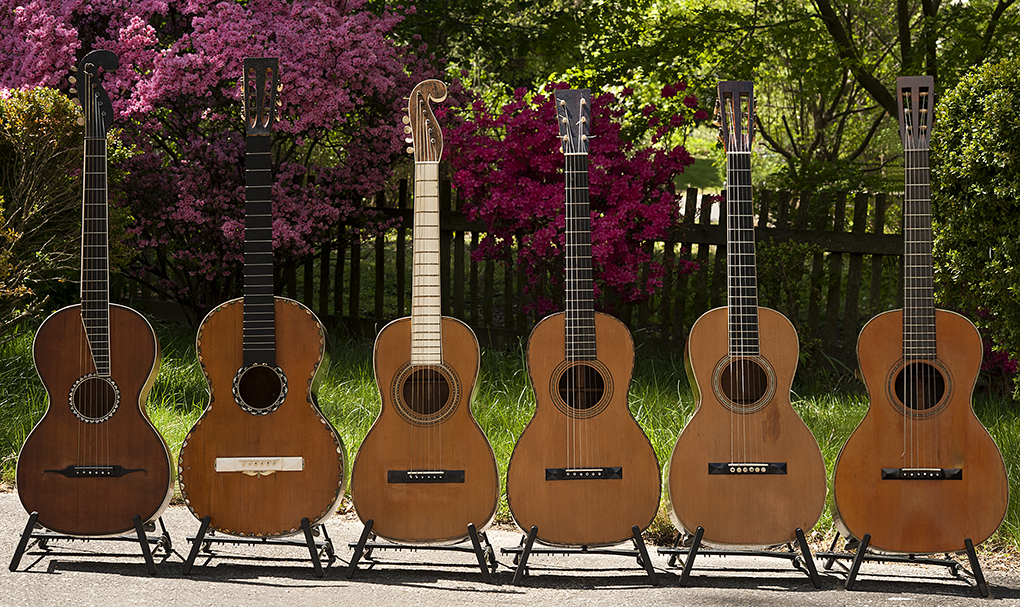
Stauffer Martin, Hudson Street Martin, Size 3, Size 2 1/2, Size 2, and Size 1.
Martin Guitar Sizes
In the 1960's, the Martin guitar, and more specifically, the Martin Dreadnaught, became identified as the industry standard for all serious guitar players, not just for Bluegrass, but for all players in the "Folk" movement that swept the world. Even a 000 size Martin was considered too small to be relevant. By the early 1970's, the D-35 became the preferred side-arm of the growing crop of singer-songwriters.
By the 1980's, the 000 size, with the help of Eric Schoenberg's discovery of the OM, and a photo of Stephen Stills with a pre-war 000-45, became recognized as the ideal guitar for fingerpickers. To this day, however, a 000 is considered a "small" guitar, and anything smaller is thought of as a "toy".
Martin started in the 1930's with relatively large Viennese style guitars, though by the 1840's Martin had reverted to the smaller "parlor" size guitar, and guitarists were very slow to accept larger guitars.
While perceived as a tiny guitar by today's standards, the size 1 was considered to be Martin's "Standard" size guitar, and was tremendously popular in Martin's early years, as was the beginner's size 2 1/2.
While the single 0, the first guitar designed specifically for use in "concert", as opposed to the "parlor", appeared in 1854, the larger 00 size "Grand Concert" did not appear until 1873, nearly 20 years later.
When the 000 was introduced in 1902, it sold very poorly, and was not widely accepted until the 1920's.
Martin has always been specific about the intended use for it's various size guitars.
F - Grand Auditorium
000 and C - Auditorium
00 and R - Grand Concert
0 - Concert
1 - Standard
2 - Ladies
2 1/2 - Child's
5 - Junior
With the introduction of the 2-17, the 2 size was referred to as an Amateur guitar.
The 1898 Martin catalog includes descriptions of the various sizes:
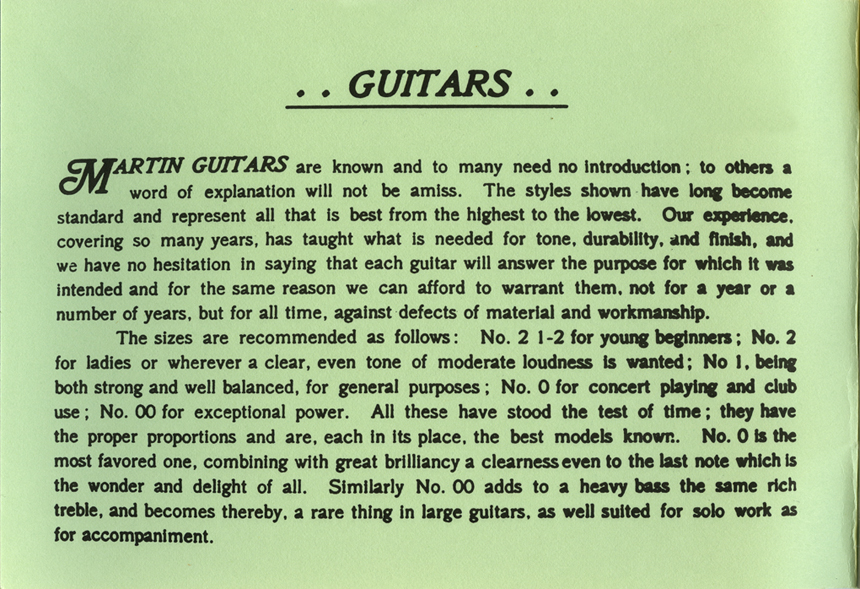
Martin was consistent over the years in the size 0 being their favorite guitar when extra volume was not necessary.
Some folks believe a larger body is required to provide adequate bass, and feel that less than a 000 or Dreadnaught is inadequate in this regard.
I've discovered that a single 0 has a wonderful bass response, providing a well defined and more 'concise" bass that is often heard more clearly in the mix.
The 1930's catalogs included a listing of sizes:
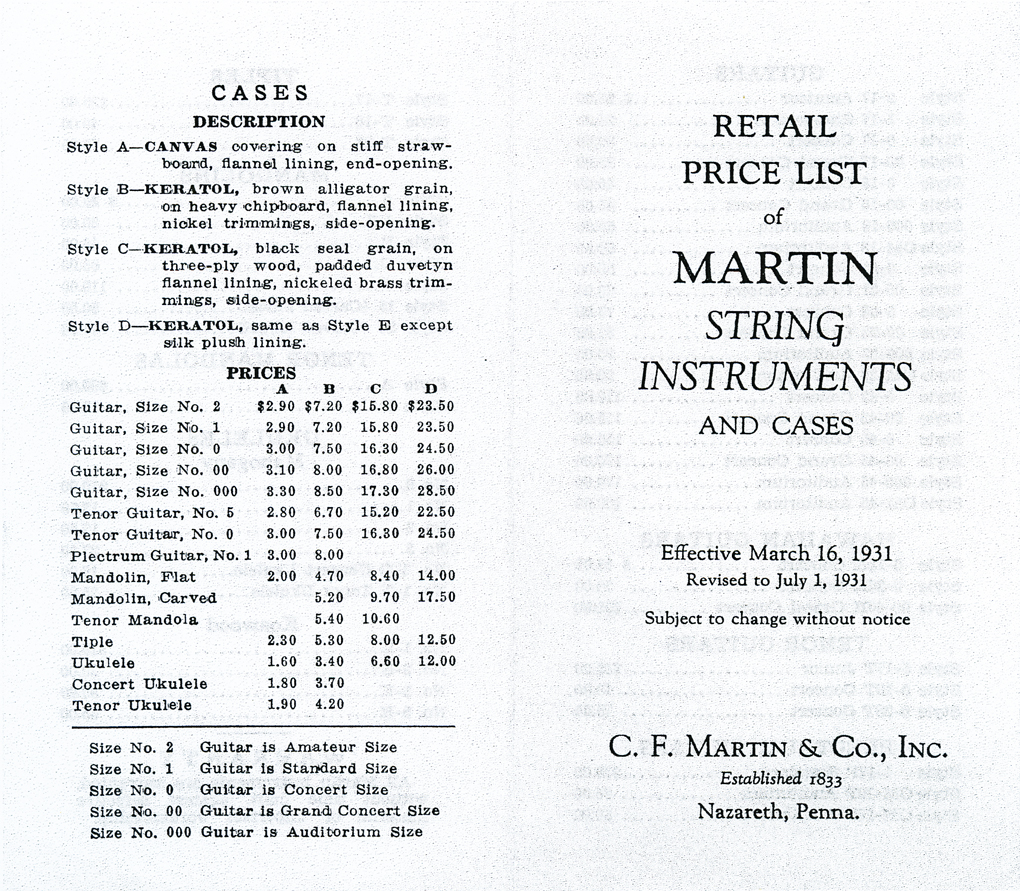
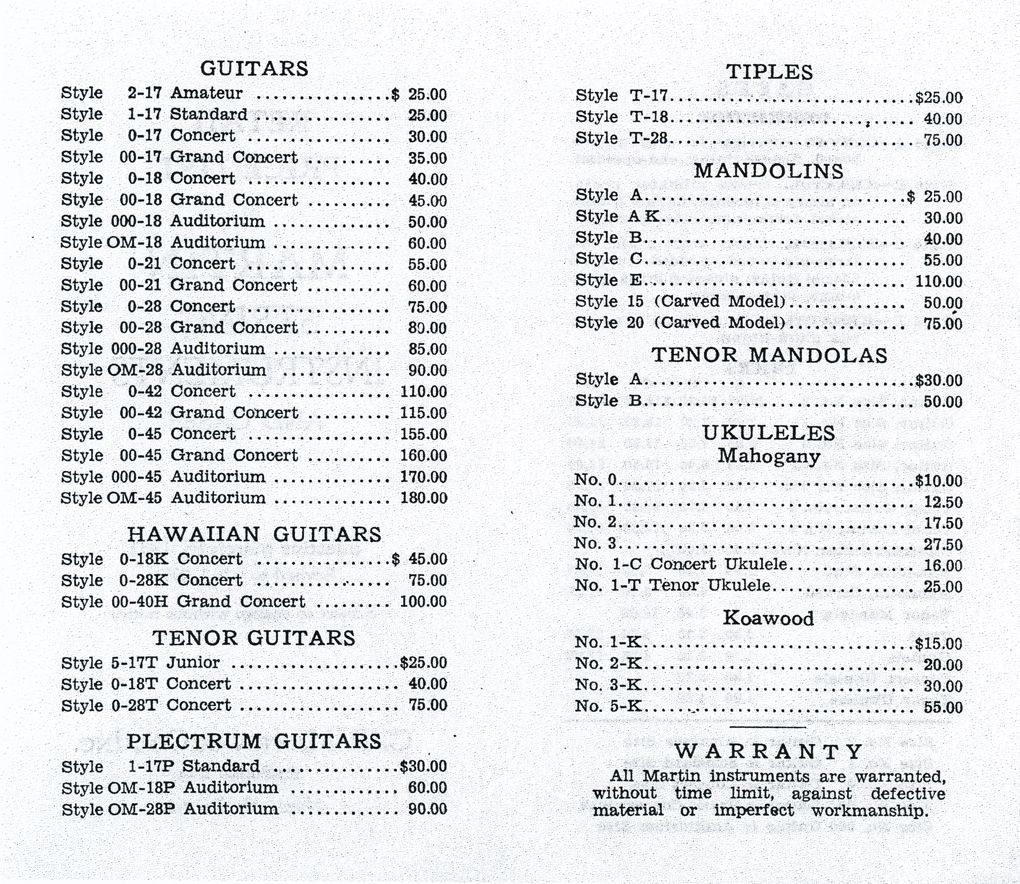
The 1933 Catalog includes archtop guitars:
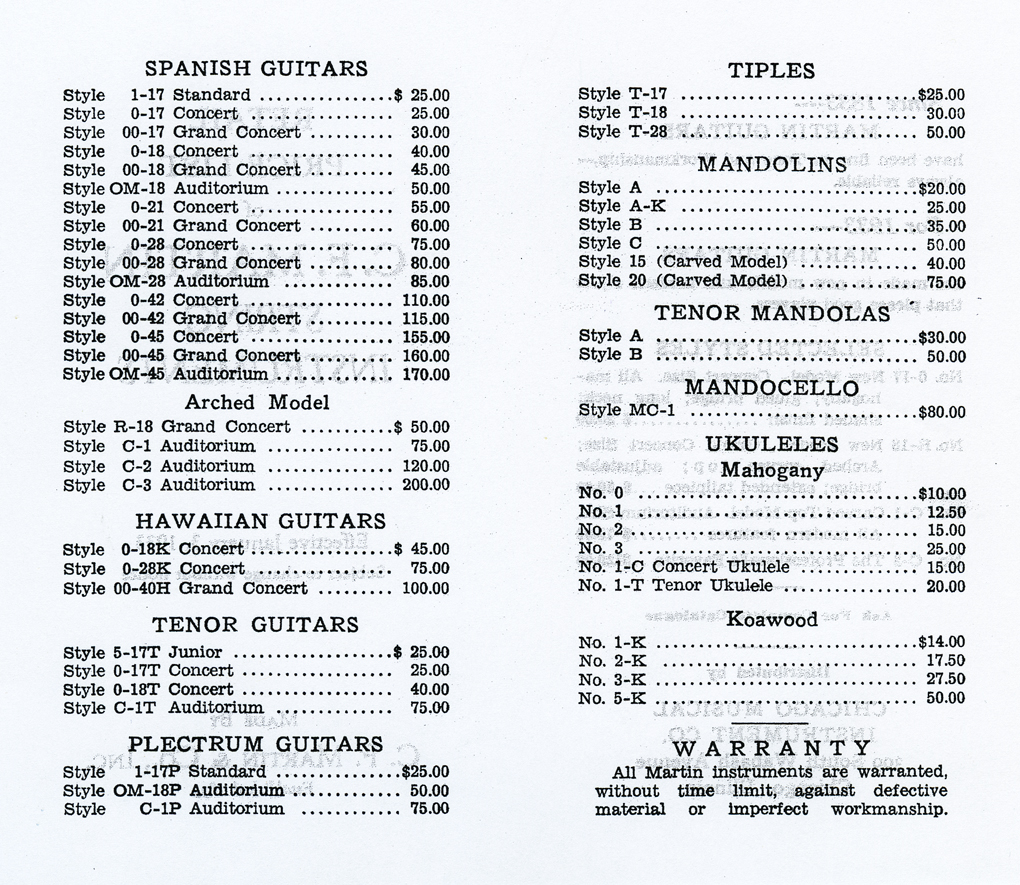
Identifying Martin Guitar Sizes by Body Width
12 Fret
Dreadnaught - 15 5/8"
000 - 15"
00 - 14 1/8"
0 - 13 1/2
1 - 12 3/4"
2 - 12"
2 1/2 - 11 5/8"
3 - 1 1/4"
3 1/2 - 10 11/16"
5 - 11 1/4"
14 Fret
Dreadnaught - 15 5/8"
000 - 15"
00 - 14 5/16"
0 - 13 1/2
5 - 11 1/4"
Comparing 12 and 14 Fret Martin Guitars
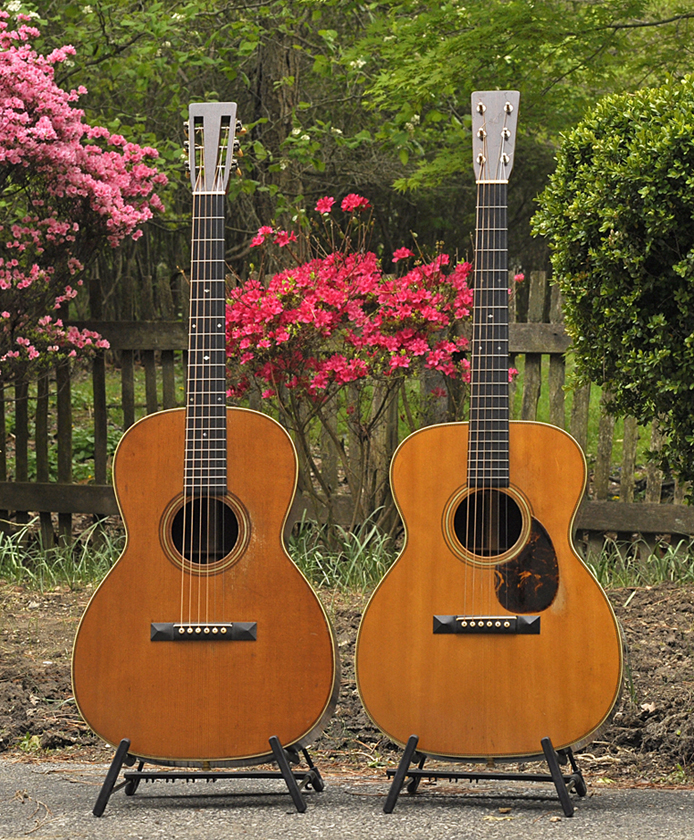
The 12 Fret 1928 000-28 and early 1930 OM-28
These are the special sizes in which Martin produced guitars for the Oliver Ditson Company.
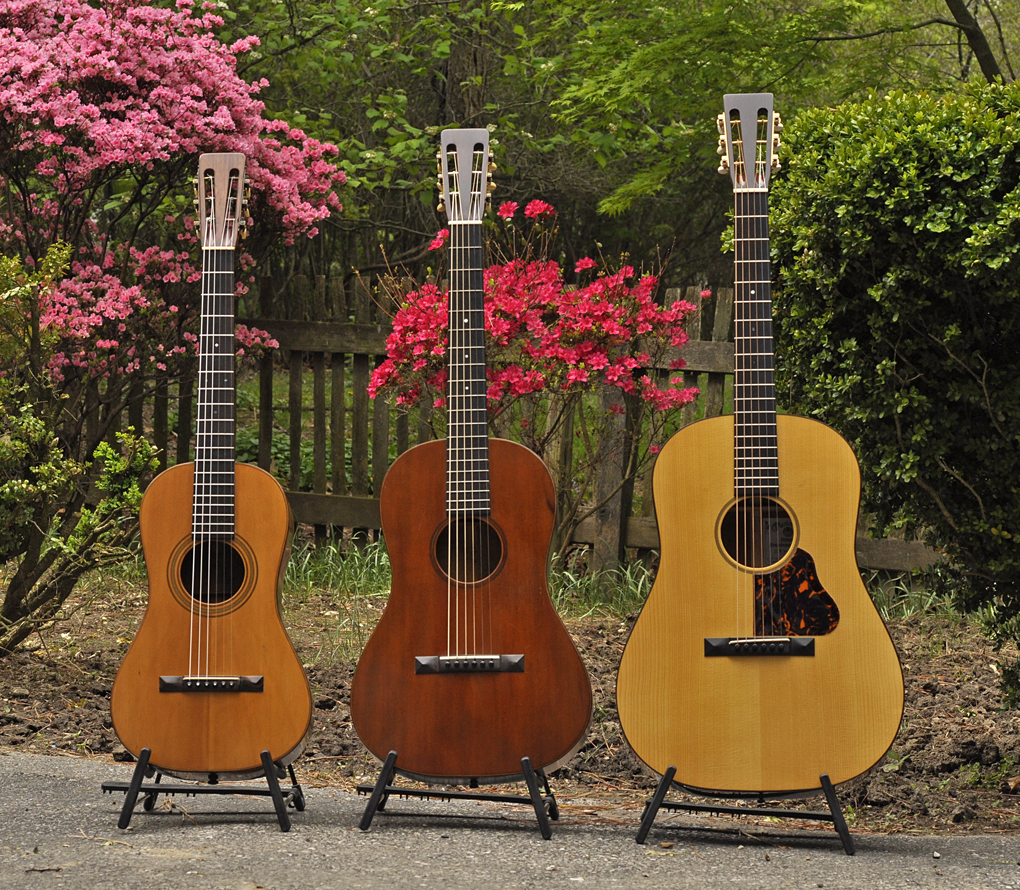
Size 1 Standard, size 11 Concert, and size 111 Extra Large or Dreadnaught
Sizes of Early 12 Fret Martin Guitars
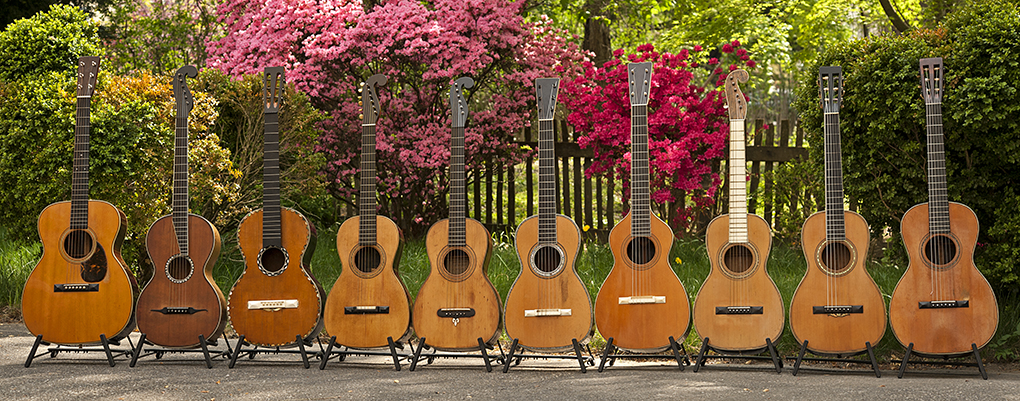
Early Martins, from a Martin Stauffer and Hudson Street Martin to various assorted parlor size guitars, roughly equivalent to but from before the standardization of the size 2, 2 1/2 and 3, to a size 1 with alternative X bracing, with an early 14 fret Orchestra Model on the far left for comparison. In context, the size 1 is a surprisingly large guitar, as with the 000 above, making up for in length a good part of what it lacks in width compared to a modern 14 fret guitar.
SCALE LENGTH OF EARLY MARTINS
The following is a sampling of scale lengths of early Martins illustrated on this web site.
The first number is the scale length. The number on the right is the string spacing at the bridge.
As you can see, the earliest scale lengths were quite long, followed by a period of short 24" lengths.
The later guitars seem to be somewhat standardized at 24 1/2" for the small body guitars, and 24 7/8" for size 1.
(all pre-1867 Martins unless otherwise noted)
EARLIEST FANCY MARTINS
25 1/4" Original Stauffer - moustache bridge. 2 5/16"
24 7/8" Hudson Street - replacement ivory pin bridge. 2 5/16"
24 1/2" Early fancy Spanish size 3 - ivory tie bridge. 2 7/16"
24" Ivory fingerboard Stauffer headstock - replacement ebony pin bridge. (I've wondered if the original was ivory pin or tie). New bridge plate. 2 1/4"
MARTIN & COUPA
24" Early Spanish Martin & Coupa - ebony tie bridge with ivory inset 2 9/32"
24" Koa Martin & Coupa - shield shape bridge, pins in arc. 2 5/16
LIGHT DIAMOND BACKSTRIPS/ Spanish foot
24 3/4" Hybrid X 1-28 2 3/8"
LIGHT DIAMOND BACKSTRIPS/ split neck blocks, old marquetry end
24 7/16" 2-23 2 1/4"
24 1/2" 2-24 2 5/16"
24 1/2" 2-24 2 5/16"
24 1/2" 2-20 2 5/16
DARK DIAMOND BACKSTRIPS
24 7/16" 2-23 2 5/16" (solid block)
24 1/2" 2- 21 2 5/16" (split block)
EARLY MARTINS WITH OTHER MARQUETRY BACKSTRIPS
24 1/2" 2-20 with herringbone backstrip, old marquetry end 2 5/16
24 7/8" 1-21 with zig zag marquetry rosette 2 5/16"
24 7/8" Early 1-28 with pearl rosette 2 7/16"
24 1/2" Early 2-27 2 5/16"
NO BACKSTRIP
24 7/8" 1-26 with zig zag marquetry border 2 3/8"
POST 1867 MARTINS
24 1/2" post '67 2-27 2 5/16"
24 7/8" 1890's 2-42 2 5/16"
earlymartin.com
To See Robert Corwin's Classic Photography of Folk and Roots Musicians, visit:
For Information on Photography for
Exhibition, Publication, CD's, Promotion, Web Pages, Tour Books,
to Purchase Photographic Prints, or
If You Have Questions About An Early Martin Guitar:
e-mail: Robert Corwinentire site copyright ©1998 through 2012 Robert Corwin/Photo-Arts. All rights reserved.